
|
 |

|
 |
Dance, identity and religion in the Pakistani context - Sheema Kermani, Pakistan e-mail: tehrik@gmail.com August 29, 2010 This article was written for and presented at the CND - Centre national de la danse, Paris, for their Conference 'Dance and Identities' 2006. It is printed and published in the journal Danses et identities - De Bombay A Tokyo - Centre national de la danse, Pantin 2009 "The Sufi is dancing like the shimmering rays of the sun, Dancing from dusk till dawn. They say, "This is the work of the Devil." Surely then, the Devil we dance with is sweet and joyous, And himself an ecstatic dancer!" - Mevlana Rumi, Masnavi I am a performing artist, a dancer from a country that banned all public performances of classical dancing by women on stage and all other media in 1981. The official document stated that dance was "obscenity and nudity" and against the religion of Islam. A whole generation has grown up being told that not simply dance, but all "culture" is a dirty word and since then all performing arts have been discouraged in Pakistan especially dance. The official ban exists even today and those of us, who continue to defy it, do so at the risk of our lives! Dance as an institution is practically non-existent in Pakistan today. Before 1977, when General Zia-ul- Haq took over as the military dictator, there did exist some academies and some institutions but by the end of the 70's, they were made to close down, and almost all the dancers were forced to leave the country. Ever since then, for those who wish to take up dance at a serious level, the scene is extremely frustrating. To belong to a field of activity, which has no place in the society you live in, no encouragement, no history and very little future, is a singular misfortune. There are no traditions to follow, no Gurus to learn from and no standards to aspire to. I believe that the following three points are the major factors that have determined the state of culture in Pakistan:
Pakistan is a nation that was painfully carved out of the Indian sub-continent on the eve of colonial independence. When the partition of the Indian sub-continent took place in 1947 and Pakistan was created on the basis of the two-nation theory (Hindus being considered one nation and Muslims the other), it was said that the Muslims of the sub-continent needed a separate homeland. Pakistan emerged on the map of the world in 1947 as a result of this partition of India. It comprised of two wings, West Pakistan and East Pakistan - the latter was to become Bangladesh in 1971 (defeating the two-nation theory). The borders of present-day Bangladesh were established with the partition of Bengal in 1947, when the region became the eastern wing of the newly-formed Pakistan. However, it was separated from the western wing by 1,600 Kilometres (1,000 miles) across India. Political and linguistic discrimination as well as economic neglect led to popular agitations against West Pakistan, which resulted in the war for independence in 1971 and the establishment of Bangladesh. 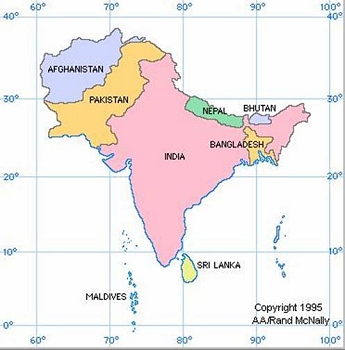 "Pakistan, the peeling, fragmenting palimpsest, increasingly at war with itself, may be described as a failure of the dreaming mind. Perhaps the pigments used were the wrong ones, impermanent, like Leonardo's; or perhaps the place was just insufficiently imagined, a picture full of irreconcilable elements."2 Are we a "failure of the dreaming mind?" Are we not sure how to define ourselves? What to claim as our cultural heritage? How to be modern? How to legitimise Pakistan? The crisis of our identity is the tussle between the adoption of modern, democratic values and submission to unchanging orthodox ideals, which apparently governs our policies. The ruling class has been unwilling to seek a resolution to this conflict. Instead, it selectively exploits both positions to protect its interests and to preserve the status quo. What is Pakistani culture is a question being asked since 1947! The roots of the problem maybe lie in the nature of the State and the Society. The Pakistani State since its inception has had problems with the question of identity and the heritage that belongs to the sub-continent. For most part of our history we have had martial law governments and even the civilian government's cultural policies have had 'concealed fascism' in their behaviour. Pakistan has been ruled by military generals between 1958 and 1971; 1977 and 1988; and from 1999 till now. The short periods of civilian governments have been between 1947 till 1956; Zulfikar Ali Bhutto (hanged in 1978 by General Zia-ul -Haq) from 1973 to 1977; Benazir Bhutto and Nawaz Sharif from 1989 till 1998. A culture policy drafted by the National Commission on History and Culture stated: "A comprehensive history of Pakistani culture will be undertaken by the National Institute of Historical and Cultural Research, highlighting the indigenous culture of Pakistan as well as the impact of Arab, Iranian, Central Asian and Western cultures".3 There is a conscious bid to avoid any mention of Indian or Hindu influences. Officially, our society is to be protected from the Indian- or Hindu- influences. In reality, the lives of our ordinary people are inundated with the popular culture of India as expressed in their movies and pop music.4 In its search for a cultural identity as apart from the cultural identity of India, Pakistan has looked upon the art of dancing with suspicion. It has continuously been claimed by the official authorities that dance is not part of Pakistani culture. The reason for this being that dance has always been an essential and integral part of Indian life and culture, and Pakistan felt that they must have a separate and a "New" culture. The challenge of forming a "new" modern nation state with a "new" national identity was faced by all post-colonial countries. In 'Shame', Salman Rushdie captures the challenge that was at the heart of our nation-building:
Well, their imaginations simply weren't up to the job, you can understand that; so it was the ones who were really new, the distant cousins and half acquaintances and total strangers who had poured in from the east to settle in the Land of God, who took over and got things going. The newness of those early days felt pretty unstable; it was a dislocated, rootless sort of thing…" 5
"[All media] has to work on the basis of Islamic values and Ideology of Pakistan to educate the new generation". General Zia-ul-Haq, 1982 Cultural cleansing It was Z.A. Bhutto who set up the few cultural institutions that exist in Pakistan. But in the latter part of his term in office he introduced the ban on alcohol and brought in other anti-democratic legislation. It was also Bhutto who tried to form the pan-Islamic brotherhood and link us politically to the Middle- East. Most of the other rulers of Pakistan have been military dictators and certainly not interested in culture. The brief interludes of civilian rule between 1972 to 1977 by Zulfikar Ali Bhutto and his Pakistan People's Party and then between 1989 and 1999 with Benazir Bhutto alternating with Nawaz Sharif, have seen the dominance of a political coterie that is largely feudal. Obviously neither of these ruling partners can be expected to look upon serious cultural activities with favour since these leads to questioning and questioning can lead to change. Any activity that can make people think, arouse their critical faculties and lead to their emotional reawakening is suspect, and the performing arts are indeed considered as highly subversive activity. General Zia-ul-Haq9 imposed Martial Law in 1977. In his policy towards the so-called Islamisation of society, he tried to link us both politically and culturally to the Middle East, with devastating effects, and an even more fragmented sense of our identity. He used the ideology of Pakistan with a pernicious consistency. Everything had to be justified in terms of ideology. And since the ideology was vague, it could be used to condemn or support whatever served his political goals. He disbanded the Arts Councils and the National Performing Arts Group and Dance Company and implicitly termed them "un-Islamic". The arts and the women of Pakistan have been the two major victims of Zia's policies. Women in Pakistan have been victims at the state level too, especially when General Zia-ul-Haq introduced anti-women Islamic Laws in 1977. The state introduced legal and social forms of control over women as part of its campaign of suppression and made women's sexuality and morality the business of the state. State forces were preoccupied with women's dress, their movements, their sexuality and their very presence in public spaces. In the name of religion, laws like the "Hudood Ordinances", "Qisas", "Diyat" and "Blasphemy Laws" were introduced and are prime examples of laws that devalue women and humanity. The most crucial aspect in these laws is that a woman's testimony is unacceptable. The Law of Evidence declares that the testimony of two women is equal to that of one man. In 1982, the PNCA-Pakistan National Council of the Arts, organised a seminar on culture and national identity, inviting academics from around Pakistan, and they all argued that Islam was both our culture and our national identity. No text in the Koran explicitly condemns or endorses dancing, but Islamic religious authorities have always been against it. I have never understood how dance and music can be defined through religious categorisations - what is Hindu dance and what is Islamic dance? It is the same as saying that there is a Hindu bomb and an Islamic bomb! But we don't only do that, we lump all dancing together with obscenity and nudity! 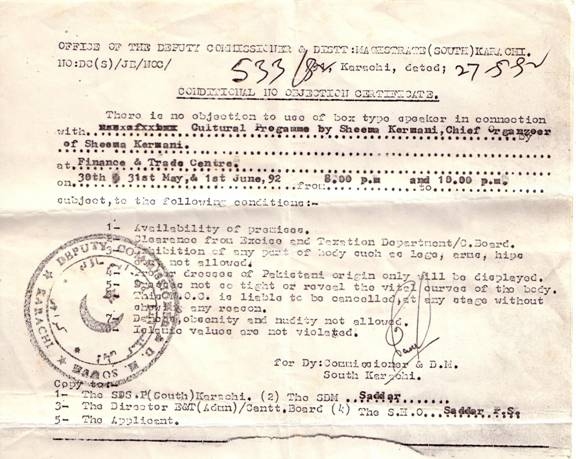 "Dancing, obscenity and nudity not allowed", is clause no. 7 of the N.O.C. (No Objection Certificate) required for a performance of any cultural activity. Further conditions for a performance licence are laid down:
- Dresses not so tight or reveal the vital curves of the body. - Islamic values are not violated. The very first programme that was banned on PTV by General Zia ul Haq was "Payal," a dance programme. Since then dancing by women remains taboo. Zia also banned devotional dancing at religious processions and on occasions of Urs at shrines. The establishment in Pakistan while being anti-culture in general has a special mistrust of the Performing Arts, which they consider a highly subversive activity as it forces you to look at your own life from a distance and question anything and everything around you. In fact in this sense all art is subversive, but the Performing Arts are more so than others, as they bring the performers and the audience in direct contact with each other. In a successful performance a fusion takes place between the audience and the performers. This potent relationship between the performer and the audience generates energy that can transform the passive spectator into active collaborators and exciting unpredictable things can happen. Traditionally in the sub-continent, dance, music and drama cannot be separated and together constitute the theatrical arts. They are elements of a unified reality, they are deeply intertwined and their goal is to lead the spectators towards wisdom, knowledge and liberation: "To uplift the soul to realms above..."10 I think that it is this transforming experience and its power, of which the authorities (both religious and political) are scared and therefore ban and discourage dance. Obviously a dictatorship, which is what we have been for the most part of our history, would not look upon such activities with favour, since these lead to questioning and questioning can lead to change. Any activity which can make people think, arouse their critical faculties, and lead to their emotional re-awakening, is suspect. The overwhelmingly great importance given to Sports in comparison proves this point. Sports in Pakistan have both government and private sponsorship while neither supports culture. Sports, obviously is not a thought provoking activity and therefore threatens no one. These conditions are shared by most Third world countries, which have suffered under dictatorial regimes and where any questioning of the status quo is not tolerated. What is specific to Pakistan and what makes it doubly suffocating is that here, political suppression is combined with cultural suppression as well. In most banana republics, people would be prosecuted for speaking against the government or state, but no one is stopping anyone from a little bit of singing and dancing. In Pakistan that too is considered, by many influential quarters, a punishable moral offence. I place the problems facing dance and theatre in Pakistan in two broad categories. The first is the active hostility of the state, which is translated into government policies aimed at making life extremely difficult for people who wish to indulge in dance and theatre at any other except an extremely crass level. I say this because the theatre of vulgar jokes and loud humour and "Filmi" dance in the "Mujra"11 style, is thriving and encouraged even at an official level. In the old days, the performing arts were patronised by the rajahs and nawabs12 and feudal aristocracy of all shades. Later on, this role of patronage in most societies was taken over by the government and private industrialists. In Pakistan, however, the state not only did not fulfil this role, but also went on to formulate a series of policies whose purpose was to thwart cultural expression. So in Pakistan, we not only witness the absence of state patronage but an active animosity towards cultural activities. The other problem arises from the nature of the society itself, which is culturally conservative, with no tradition of free expression and deep-rooted prejudices towards the performing arts. The ruling elite or the moneyed class is not really interested in culture or its importance. Partly due to the feudal character of the cultural landscape and partly because of wanting to be on the right side of the ruling establishment, the urban industrialist also shied away from supporting serious cultural activity. Following upon the heels of the government and wanting to be on its right side for obvious reasons, private industrialists, and business houses, too shied away from supporting serious cultural activities. Karachi must be the only metropolis of its size in the world where not even a single theatre hall exists, where there is no cultural centre, no proper auditorium and consequently no regular performing company. No industrial house has ever come forward to fill this need. While there is support for junk music, fashion shows and sports, no funds are available for classical music, theatre or serious cinema. Culture is not on the list of worthy causes to be supported. Its civilising influence is totally ignored. The poor on the other hand are tied to their everyday problems of survival. For them, cultural activities are luxuries beyond their means. Like any other class society, the onus of cultural expression falls on the middle class. The Pakistani middle class, predominantly Muslim, is small, conservative, underdeveloped, and extremely anti-culture and regards the performing arts with disdain and contempt. This attitude is reflected in the derogatory terms that are prevalent amongst them for various practitioners of the performing arts; A singer or musician is a 'Meerasi', an actor a 'Bhand', and a dancer, of course is unspeakably low, if not a 'Prostitute'. Female artists and sexism In Pakistan, artists are looked down upon, but female artists are simply considered of no value. In the performing arts, women are presented as two kinds; one is the "family woman" who is considered pure, chaste, loyal and obedient, the other is the "professional artist" who is considered almost a prostitute. I have often been told by many of my female students that "my father says dance is against our religion." Is it? No! It is not religion that is the determining factor; it is Patriarchy and Gender bias that does not allow us to dance. I have often been asked what is it that makes the Muslim male so anti dance. I feel that the Muslim male is actually threatened by the power that a woman gains through dance; for the Muslim male psyche the inherent message when a woman goes on stage is the same as the Tahitian dancers, "Here I am, I am healthy and attractive, I know who I am and I am happy with myself."13 This assertion of identity, which is strong, complete and whole, acknowledges, in its own way, the power of the female body and the need of the patriarchal order to keep women's bodies and sexuality firmly under control. In fact, it is difficult to find a Muslim name in the dance world of the sub-continent. In 'MIRRORS & GESTURES - Conversations with Women Dancers' by C S LAKSHMI14 - published in India in 2003, almost all the dancers interviewed, have talked about how difficult it was for them as women to learn dance and to find a respectable place for themselves in society. All of the dancers interviewed talk about the difficulties of combining art and family life, with some opting to remain single, and others giving up dance after marriage. A woman taking up music even today as a profession still does not find entry easy. The decision to take up dance has always been a challenge whether the family belonged to Islam or Hinduism. Gender bias exists in India, not only for the dancers but also, though much less, for the musicians. Gangubai Hangal, a much respected female classical vocalist had once said, "If a male musician is a Muslim, he becomes an Ustad, if a Hindu he is a Pundit, but women like Kesarbai and Mogubai and Akhtaribai always remain just Bais".15 As early as 1883 the colonial government in India had come out with a report in South India that the higher pursuits of art were the preserve of Brahmins and upper caste men and the female artists, specially dancers, belonged to the lower castes. "In some ways, the contestation that has surrounded dance in Pakistan after Independence mirrors the debate that earlier seized colonial India. It was, after all, as recently as the 1930s that Rukmini Devi faced the hostility of the Brahmins of Mylapore. In the struggle to reinvent dance as an acceptable, middle-class cultural practice, the temple art of Sadir was forcibly separated from its traditional social group, the devadasis, and fitted with a new name and an ideology that assimilated it to an urban educated class. The outcries that were raised at that time, the arguments connecting dance with immorality and decadence, were not unlike the views that have squelched classical dance in Pakistan. Even now the arts of music and dance meet with condemnation in Pakistan because of old kotha associations. A genuine problem faces those who wish to preserve and develop the dance heritage in Pakistan. How can South Asian classical dancing, for long associated with temples, myths, gods, and Hindu imagery, be remade to fit the national consciousness of Pakistanis? One solution proposed by dancers and critics is to emphasize the humanism and universality of art. As Nadir Ali, writing in The News, argues, "The so-called 'Indian dances' are not Indian nuclear missiles. Gentle and joyful art forms like dance and music belong to humanity. Where these art forms are endangered, the humans will also become an endangered species. That is what civilisation is all about."16 Struggling for a Pakistani contemporary dance To counter the argument that we do not have dance in our culture, I created a ballet entitled "The Song of Mohenjodaro", which traces the roots of dance to the culture that existed in the Indus Valley civilisation of 2500 B.C. This production was premiered in 1992 at Karachi. In this work, I explore the origins and evolution of folk dancing and classical dance. I believe that the roots of folk dancing are to be found in the process of collective labour activity. As a collective working process required a coordinating working rhythm, various folk dances came into being - the Sowing dance, the Harvest dance, the Bhangra, the Jhoomer. 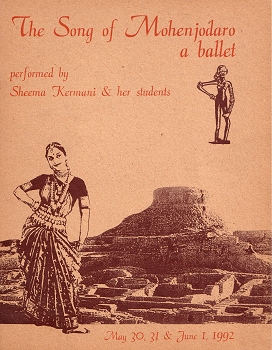 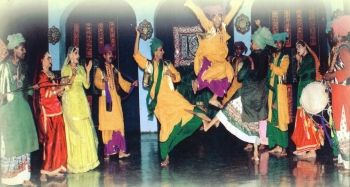 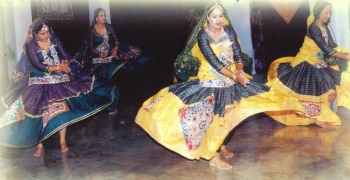
Students
of Sheema perform Bhangra and Jhoomer, folk dances of Punjab and Sindh
Human beings celebrated by dancing, they gained courage by dancing. From these forms emerged our classical dance, as we know it today. This is a culmination of centuries of refinement, sophistication and generations of dedicated work. In classical dancing, we find a synthesis of accumulated human discovery of rhythm, movement and forms. But our cultural officials declared that there was never any dance in Mohenjodaro and they gave away the beautiful statuette of the "Dancing Girl of Mohenjodaro" as a present to India. The original now stands in the Delhi museum while the national museum in Karachi only has a copy. 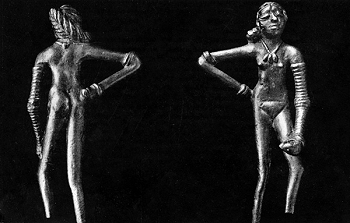 I have been amazed to discover carvings on old temples in Sindh reminiscent of postures from the Odissi dance style. The carvings have been badly mutilated but we can make out the dancing postures and some of them reminded me very vividly of the carvings I saw in Orissa from which the Odissi dance postures have been revived. Odissi dance has a tremendous sculpturesque quality since it has been revived and based on sculptural evidence. I feel very strongly that the origins of this beautiful lyrical dance lie right here in our soil. 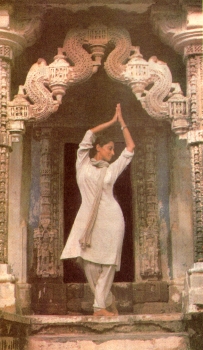 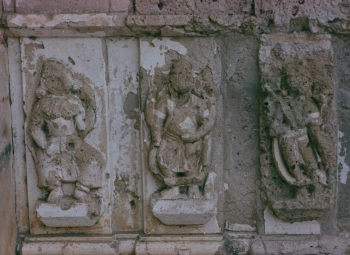 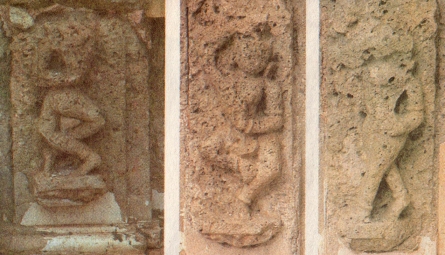 What has become my concern in the last many years is to try and evolve a characteristic style, which we in Pakistan can call our own. A dance form, which is alive and dynamic, contemporary and relevant, it should be able to harmonise the physical, intellectual, emotional and spiritual dimensions of life, have the power to touch and communicate at all levels as well as to transcend and transform by its magical language. I don't only want to soar and fly myself but I want my audience to also experience this moment of freedom. More than 20 years of teaching dance to young people has taught me that dance helps develop confidence, creativity, expressive skills and physical well being. At successful performances, energy flows back and forth between the performers and the audience and exciting, unpredictable things can happen. This transforming experience is what we desire and no ban can stop the impromptu dance performances of everyday life. So many of us remember the liberating experience we all shared when on the roads of Karachi in December 1988 everyone, old and young, man and woman was dancing with joy and happiness at the ending of the long period of fundamentalist dictatorship. Each performance is for me a process of search, of exploration, of strengthening and enhancing the forms that I know so that I can maybe evolve a style of my own. It is not transplanting, borrowing, imitating or becoming a "shadow culture", but it has to be an inward journey, a search for the truth. A fundamental requirement for the development of the Performing Arts in general and for Dance in particular is a complete freedom of expression and thought. Arts can only exist in a society that is tolerant of divergent opinions and open to questioning on every conceivable aspect of life. There can be no sacred cows in art. One of the main reasons for the progress of western societies in the last couple of hundred years is the 'institutionalisation of doubt", and a spirit of free enquiry. Unfortunately this is made impossible in Pakistan, not only by the state, which imposes censorship for its own reasons, but also because of the intolerant attitude of the fundamentalists. Any divergence from traditionally held beliefs or expression of an idea, which goes against the grain of one or the other sect, brings with it the threat of physical violence. Dance, or any art form for that matter, if it has to be of any value, must touch upon sensitive issues and not avoid them, as we are unfortunately forced to do. Our challenge is to be able to make classical dance transcend religious boundaries and achieve the status of a contemporary art and to make it relevant to the inhabitants of a global, post-modern world. It is necessary to discuss formal aesthetics as well as social responsibility, that is, technique and ideology. For me the classical base engenders new forms that are not reproduced but innovated. It is important for me that I have studied different styles and know "Chouka", "Aramandi", "Tribhangi", and at the same time try to understand their similarities and differences. All postures from other styles must undergo scrutiny. What is the use of the spine? How the body is gravitationally centered? The relationship between form and content for me has always been a dialectical one. I seek to question prevailing ideologies of patriarchy, and believe that art should necessarily be related to life. The question may arise for some: why ideology at all? I believe that ideology is not separate from form and the point is to rediscover the old forms as much as to create new ones. 2 Salman Rushdie, Shame: London, Picador, 1983, p.87 3 Policy on Culture of Pakistan, National Commission on History and Culture, Islamabad, 1995 4 Videos of Indian films were available even during the “Islamic” military rule in the eighties 5 Salman Rushdie, Shame: London, Picador, 1983, p. 81 6 Ayesha Jalal, The State of Martial Rule: Lahore, Vanguard, 1991, p. 296 7 Jamil Jalibi, Ex-Chancellor of Karachi University 8 Mutala-e-Pakistan, course book of compulsory course for all college students 9 In 1979 General Zia-ul-Haq, became the country's third military president. Pakistan's secular policies were replaced by Zia's introduction of the Islamic Shariah legal code, which increased religious influences on the civil service and the military. He brought in many anti women laws and ordinances. He died in air crash in 1988 10 Bharata's Natyashastra 11 Mujra: dance performed by prostitutes/courtesans to titillate male audiences 12 'Nawabs' were landed noblemen or people of high social status 13 Gerald Jones, Dancing: New York, Harry Abrahams, 1992, p.19 14 C S Lakshmi, Mirrors and Gestures: New Delhi, Kali for women, 2003, p. xiv 15 A derogatory term for women implying that they are almost prostitutes 16 Kathryn Hansen, Classical Dance Re-emerges in Pakistan, Samar 8: Winter/Spring, 1997 17 A classical dance form - said to be perhaps one of the oldest dance forms of India. Odissi traces its origins to the Indus Valley Civilisation of Mohenjodaro 2,500 BC. As this civilisation was destroyed so was the dance form. It was later revived in India in the state of Orissa from sculptural evidence found amongst the ruins and cave and temple carvings. Post your comments Pl provide your name and email id along with your comment. All appropriate comments posted with name & email id in the blog will also be featured in the site. |